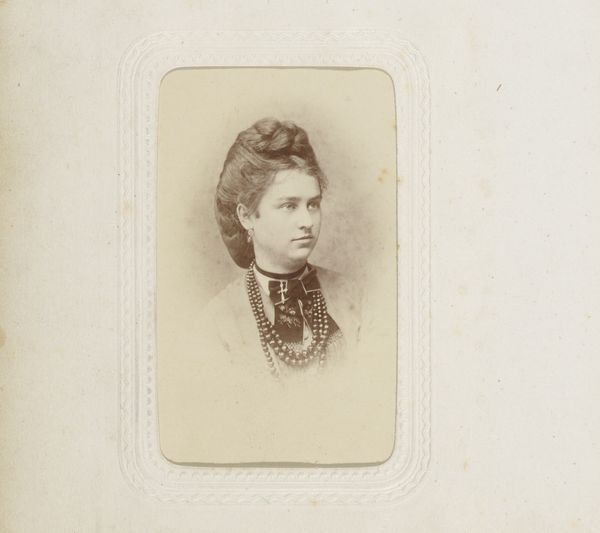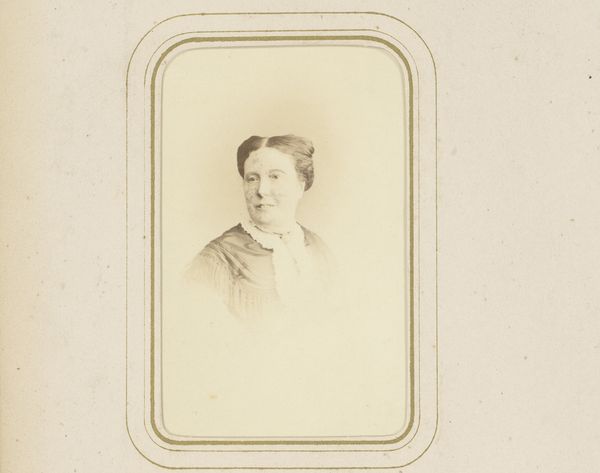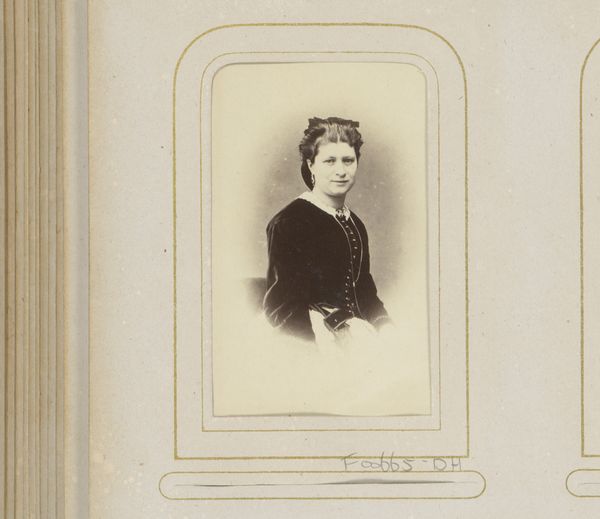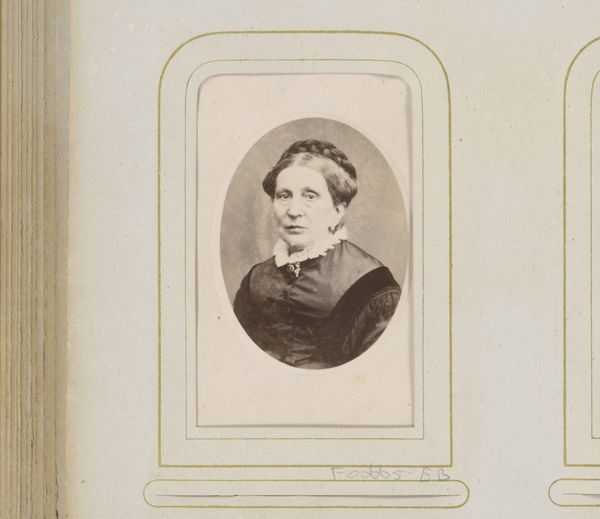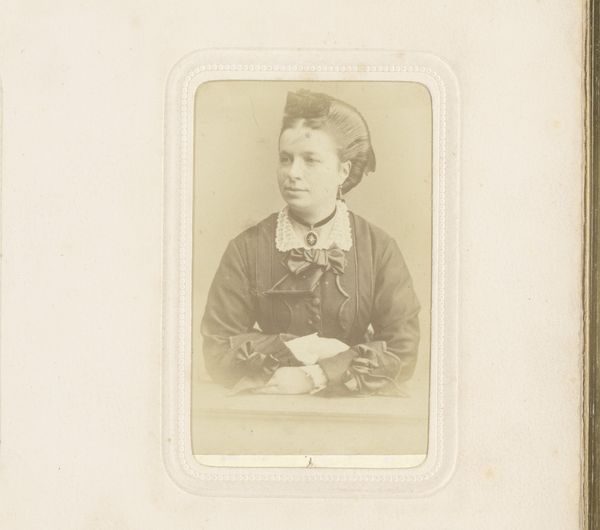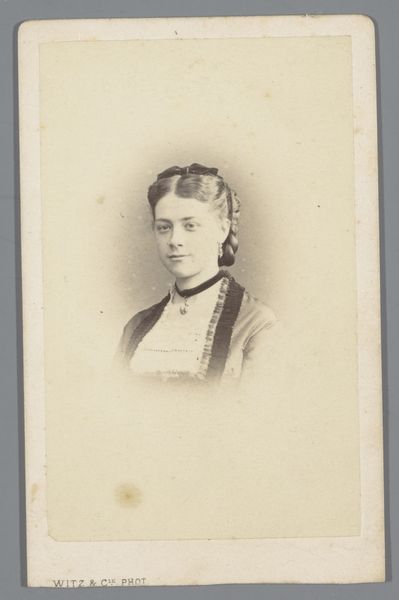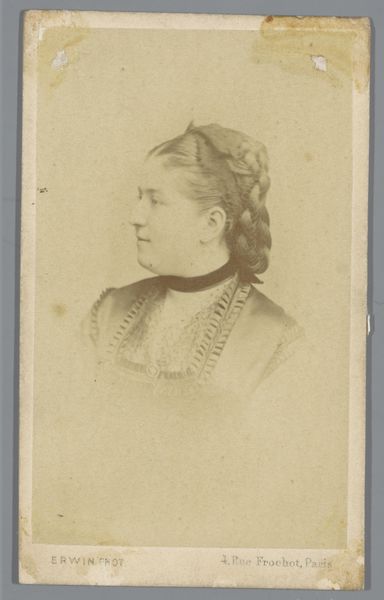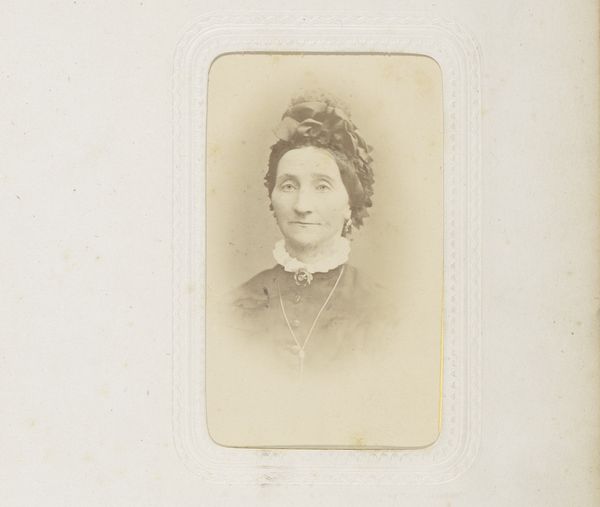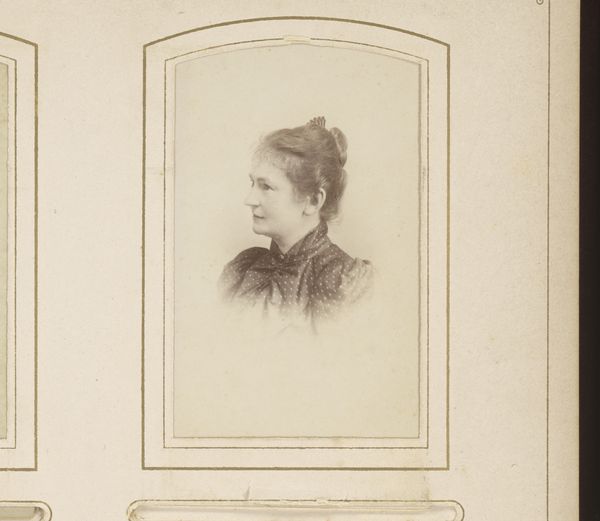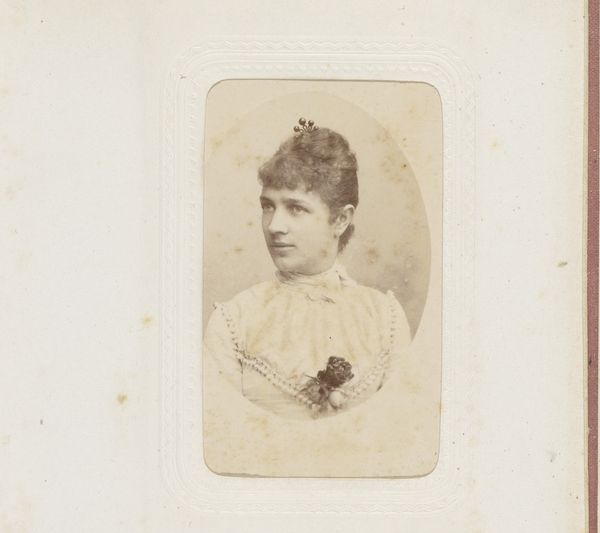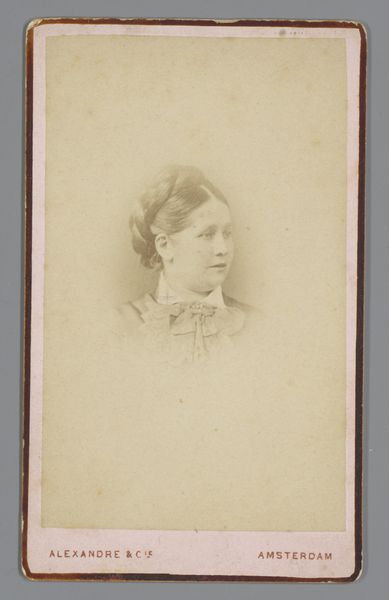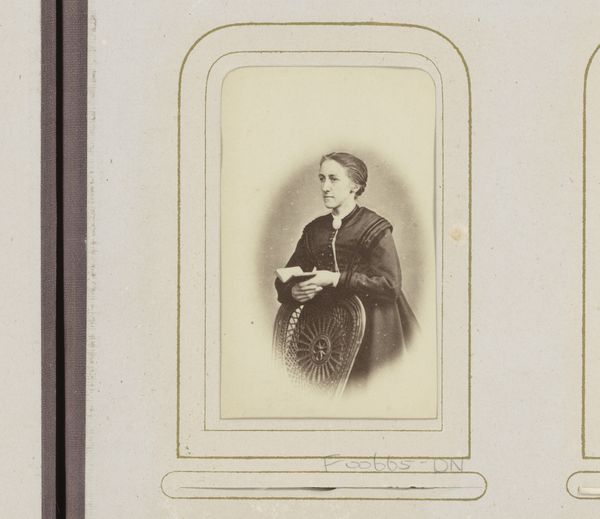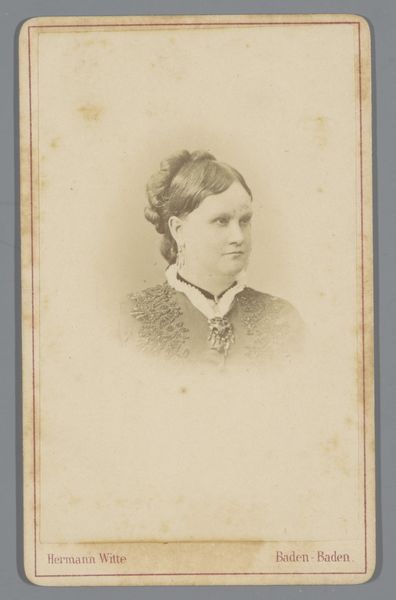
photography
#
portrait
#
photography
Dimensions: height 82 mm, width 49 mm
Copyright: Rijks Museum: Open Domain
Curator: Looking at "Portret van een vrouw," a photograph likely taken between 1850 and 1900, I am struck by how formal and composed it is. There's a deliberate stillness that permeates the image. Editor: Yes, it's that air of restraint which I find fascinating. She looks poised, but her slightly averted gaze and the tight control of her posture perhaps hint at a more complex inner life constrained by societal expectations. What can you tell me about the conventions of portrait photography at that time? Curator: Early photography had to grapple with long exposure times, so subjects had to be still for extended periods, naturally creating a sense of solemnity. But beyond practicality, portraiture became a means for middle-class individuals to record and project their status. The formality reinforced their aspirations for respectability. Notice the accessories--the brooch, the earrings. These tiny, visual codes speak of aspirations of the bourgeoisie. Editor: That's interesting, considering photography's reputation as democratizing the portrait. We often forget that it became, quite quickly, another arena for upholding social hierarchies. The subtle class signifiers are compelling: the carefully styled hair and modest jewelry are all very carefully chosen for the occasion of representation. I also wonder about the absent narrative—whose gaze were they trying to evade or appease by choosing these visual attributes and composing themselves thus? Curator: Exactly. The symbols speak volumes. The velvet ribbon could represent mourning or perhaps fashionable sensitivity. Her direct look away may be emblematic of inner resolve that also symbolizes her cultural values during this specific time in European history. The image suggests more than it directly shows, layering complexity on what seems, initially, a straightforward photograph. Editor: Ultimately, what this piece communicates to me is that still, ongoing, silent negotiation that many women must have gone through in representing their identities during the dawn of photography: How can they utilize portraiture to reveal inner strengths while operating inside prescribed structures? It remains deeply moving on multiple layers. Curator: Agreed. "Portret van een vrouw" is both a personal portrayal and an artifact which presents the broader cultural narratives playing out during the formative years of photography.
Comments
No comments
Be the first to comment and join the conversation on the ultimate creative platform.
